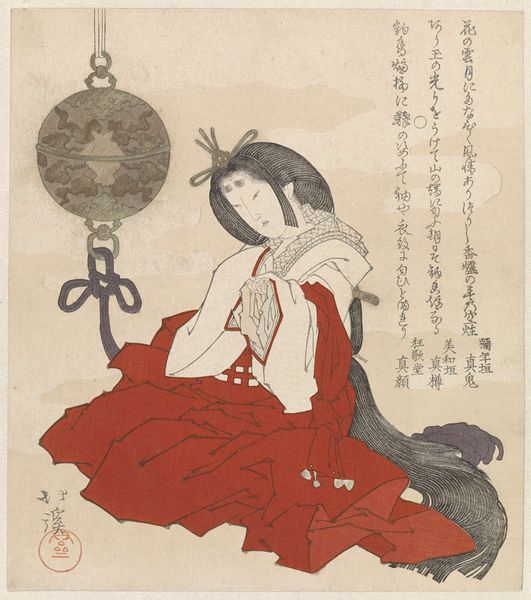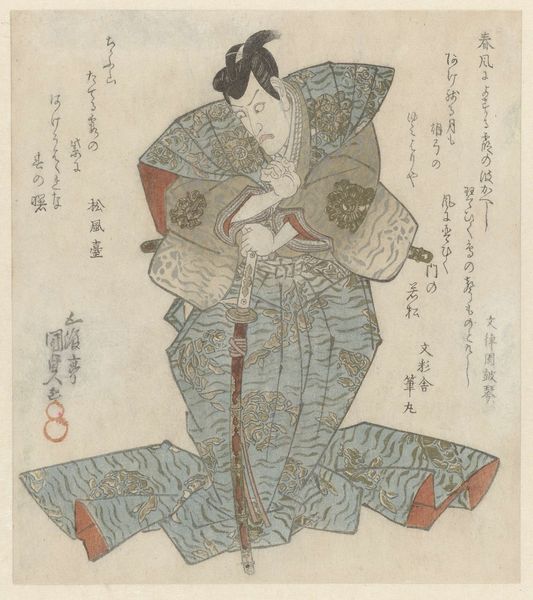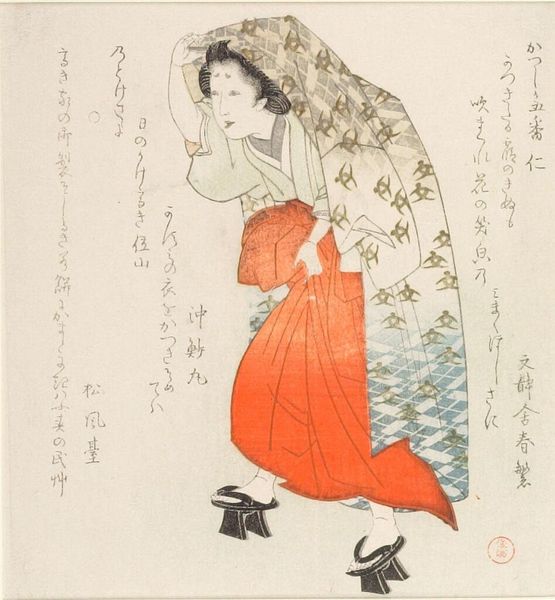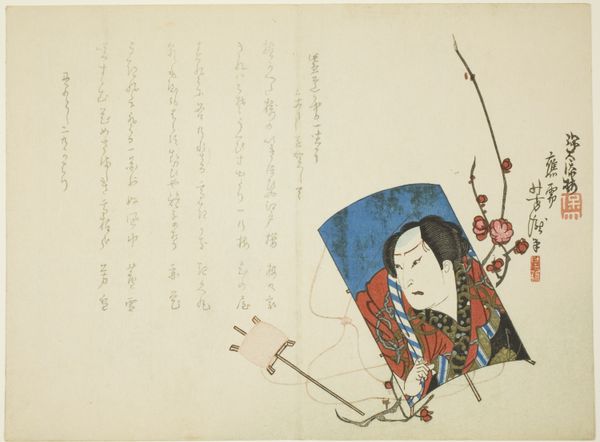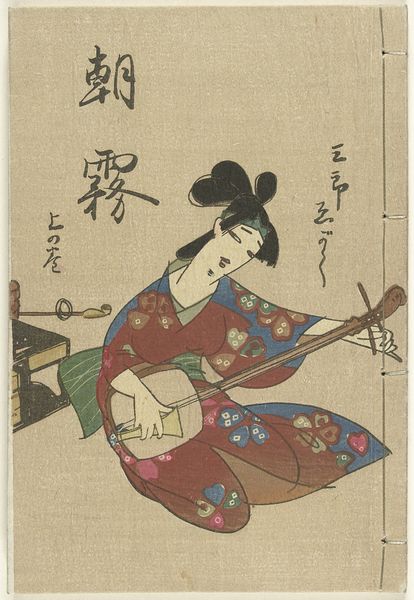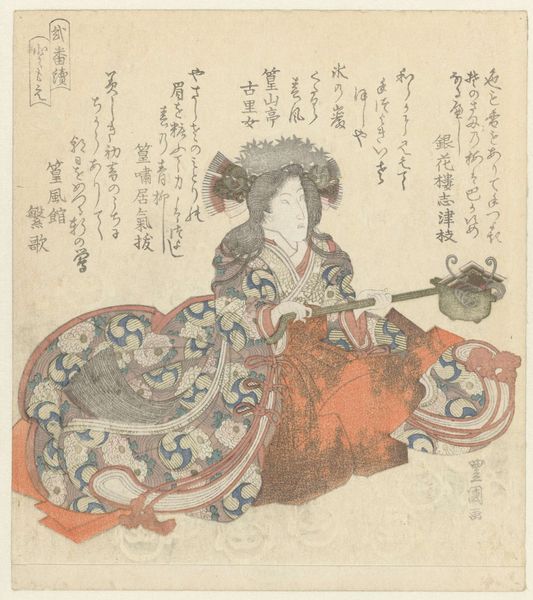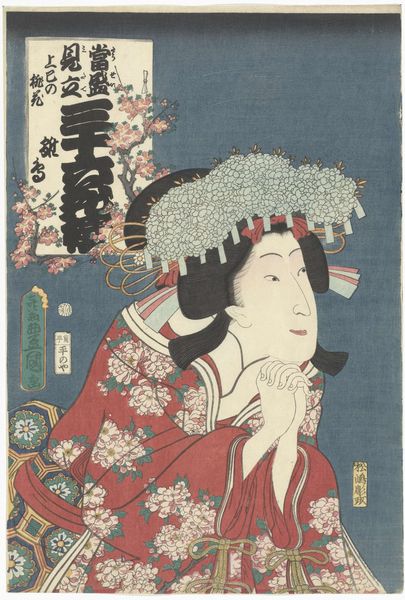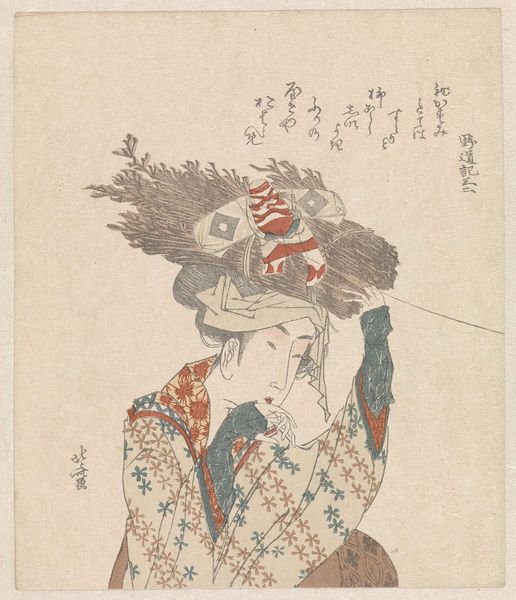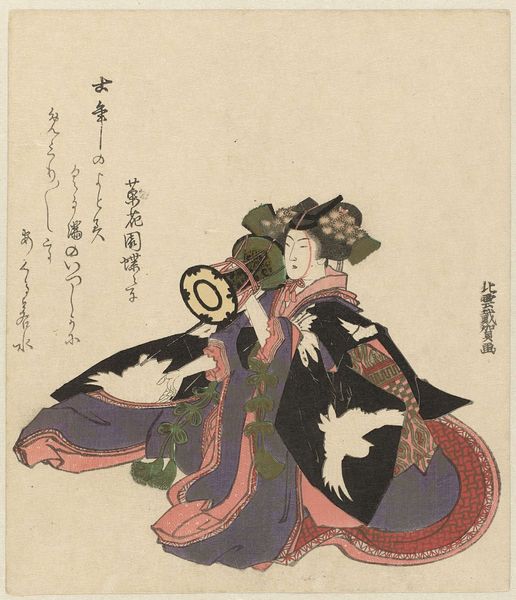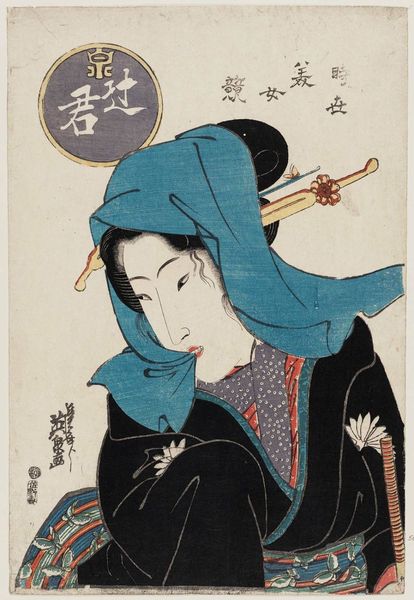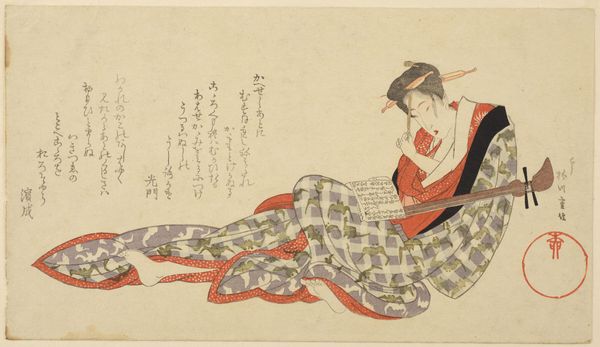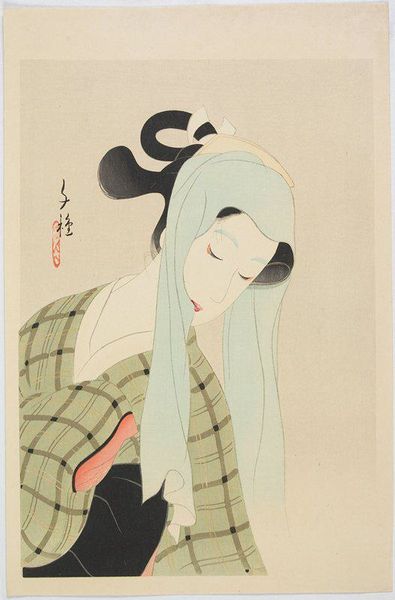
Dimensions: height 214 mm, width 182 mm
Copyright: Rijks Museum: Open Domain
Curator: Ah, I’m struck by its quiet, slightly melancholy mood. Is it just me, or does it evoke a sense of hidden stories, lurking behind that static, mask-like face? Editor: Well, let’s delve a little deeper. What we have here is a Japanese woodblock print, a ukiyo-e titled "Een Noh masker" created around the turn of the century by Utagawa Kuninao. The print depicts exactly that – a noh mask. Curator: Of course, noh masks have always fascinated me – objects of transformation, portals into other realities, allowing actors to embody spirits, gods, demons, even women, blurring the lines of gender, class and power in fluid, almost disconcerting ways. But why capture its image lying on fabric? Editor: That’s a compelling question! The choice to depict the mask this way invites multiple interpretations. It could suggest the mask is temporarily discarded, its power dormant until a performer breathes life back into it. The fabric too—that's also carefully considered. Curator: The textiles certainly add to that feel of sumptuous artifice – but what do you read in the contrast between the flatness of the print and the sculptural qualities of the mask and fabrics? I'm captivated by how the stylized face—almost comical in its stillness, conveys complex emotion. Editor: I’d say the print highlights the mask's duality – its artificiality, but also the profound emotions it can represent on stage. These masks weren't meant to just portray a static emotion but a whole arc. In some lights they looked sorrowful, others fierce, or even joyful – they held multitudes, expressing complex, almost contradictory, feelings. The caricature feels contemporary, the rendering sensitive. Curator: Yes! Even discarded like this it retains a spectral presence. You can sense the years of stories it carries within. Editor: Definitely, this print is much more than an image of an object; it’s a conduit to Japanese history, theater, and culture. It connects us with rituals and beliefs long past. Curator: And perhaps makes us question what masks we wear ourselves, every day… Editor: Precisely!
Comments
No comments
Be the first to comment and join the conversation on the ultimate creative platform.

